 Leading Blog | Posts by Month |
 Leading Blog | Posts by Month |
10.31.15

LeadershipNow 140: October 2015 Compilation
See more on
Posted by Michael McKinney at 10:11 PM
10.30.15

Leading Teams Toward Success Using People, Products, and Profits I've written the words People, Products, Profits (In That Order!) so many times over the years it would be easy to think of them as simply a slogan I use, a catchphrase meant to pique your interest. I assure you this is no more the case than Apple using the words Think Different as a clever tagline. Like the words Think Different, People-Products-Profits is part management philosophy, part rallying cry, and in an aspirational context, part religion. When I invoke these words to set the table for embarking on the outrageous, it is with the full knowledge that I could sound silly, fail miserably, fall on my face, or possibly convince you that relentless pursuit of the extraordinary is within your grasp. That's a lot to bite off in a very few words. It's meant to be. In my new book, Endless Encores, a veteran CEO named Daphne spends an evening talking with an up-and-coming executive named Paul, helping him come to terms with the potential first failure he could be facing following a huge initial success. They are stuck in an airport, passing the hours. She is a leader and he is leader, only at the moment he is too obsessed with his own personal exposure to realize that he is failing to be a leader by trying to duck out-of-the-way of his own mishap. By worrying more about what he has done than what he has learned, he has shifted the weight of his problem from marginal to endemic. In truth, the failure he might be facing is not so much a setback as it is an opportunity. By the end of the story, he has embraced that and reset his sights on the long game. Save for the guidance from Daphne, Paul might have missed the boat. And the plane. And all that might have been ahead of him in the form of material reward, passionate accomplishment, intellectual richness, and emotional fulfillment. It's a close call, but he makes it over the coals. You can, too, if either you have a Daphne in your corner and you're willing to listen, or if you otherwise come to acknowledge your role as a leader is more about the long-term example you set than the specific offering you at the moment champion. One is permanent and tangible, the other fleeting and beyond your control. Where would you prefer to focus? Leading through People, Products, and Profits means committing to the idea that talent is a priori to all success. This has much less to do with your own talent than the talent you assemble, empower, and inspire. World class products and services don't create themselves. They are created by human beings, most often high performance teams, and the time you devote to building and bolstering those teams is a direct reflection of your values. When your team identifies a product concept that is worth pursuing, leadership becomes the championing of execution over the touting of an idea. We can all dream up big ideas, but few of us can bring them to market. Those who can almost invariably need some form of stewardship to hold the team together through unending punch lists of details. If that's not challenge enough, you can have the best team in the world and the best product in the world, but if your business model is not sensible and doesn't sustain the enterprise, it really doesn't matter what you set out to accomplish. A business has to create value, usually measured in the form of profit, and if you can't lead a team to do that more often than not, you're not likely to get many chances to stand in the center ring. The point of the rallying cry is to set a tone of priority, balance, and perspective. Everyone likely wants a business that is profitable, but leaping straight to the outcome ignores the most valuable element in the mix: your customers. An exceptional team that has been well-directed puts the customer in first position, in essence their supreme boss, with the primary hope that if a customer's expectations are exceeded, that customer can become a customer for life. When we talk about the notion of lifetime value, we are talking about just that: Have we surprised and delighted a customer in such a way that they ascribe emotion to the brand we represent? Will they come back for more with cost-effective prompting, and will they tell their influence circles about the breadth and depth of their fine experience? That's why a business leader is accountable first to customers, because they hold all the cards, and that's why when they pursue a business opportunity, they place investment in talent first, product innovation second, and business model third. You need all three, but put them in the wrong order and you are left extracting value from a customer rather than bonding a customer who becomes a partner in creating value. Yes, you have to juggle three balls at once in sequence if you want to repeat success, and you have to do it over and over. It's not easy and it's not supposed to be easy, because if it were, you wouldn't be worthy of praise or wealth because anyone could do it. Likewise, leadership is a choice. It's not for everyone. The rewards are far often more intrinsic than measurable, and falling on your face in a public forum is never going to be fun. You will fail. We all fail. If you learn when you fail you will also win. You have to decide if leadership is really something you're ready to shoulder. If you are, choose your words and the order of those words carefully. The talent around you will only become cynical if you're insincere and don't stand for something more than winning right now. Repeating success is about the journey. Leading is about tone and substance. Projects are always short. Careers can be short or long. The choice is always yours. Your values always matter. If you're deliberate in determining how you build a culture of shared values, the best around you will always be listening. Stay authentic and their results will surprise you. Those are likely to be extremely pleasant surprises. Ken Goldstein has served as Chairman & CEO of Shop.com, Executive Vice President & Managing Director of Disney Online, and VP / Executive Publisher of Entertainment & Education for Broderbund Software. He currently advises start-ups and established companies on brands, creative talent, e-commerce, and digital media strategy. Ken is on the boards of Thrift Books LLC and Good Men Media, Inc. He publishes the business blog CorporateIntel.us and his first book, This Is Rage: A Novel of Silicon Valley and Other Madness, was published in 2013 by The Story Plant. For more information please visit his website and follow him on Facebook and Twitter. 
Posted by Michael McKinney at 09:44 AM
10.28.15

Triggers: Do You Underestimate the World You Live In?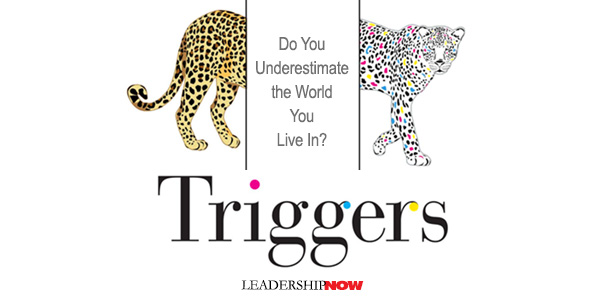 NO MATTER HOW HARD WE TRY, our environment affects us in powerful, insidious, and mysterious ways. Our environment triggers behaviors or responses in us. Marshall Goldsmith explains in Triggers the kinds of things in our environment that derail us from becoming the kind of leader, co-worker, parent, or spouse that we want to be. He illuminates an aspect of self-awareness that is so vital to a leader’s success.We can’t control our environment, but we can control our responses. We always have a choice. When it comes to interpersonal behavior we can’t rely on habits to help us. “We must be adaptable, not habitual—because the stakes are so much higher.” We need something more to help us deal with the uncertainty of our day. When it comes to triggers, it’s not the big triggers that usually do us in, it is the little moments in life that trigger our most outsized and unproductive responses. They trigger some of our basest impulses. Especially with the people we know and love the most. “We can say and do anything with these folks. They know us. They’ll forgive us. We don’t have to edit ourselves. We can be true to our impulses. That’s how our closes relationships often become trigger festivals with consequences that we rarely see in any other part of our lives—the fuming and shouting, the fights and slammed doors, the angry departures and refusals to talk to each other for months, years, decades.” So where the problem is most vivid is in the small, minor moments of the day, when we are not thinking about our environment or our behavior. That’s when we need to be most vigilant. Sometimes the best strategy is to avoid the trigger altogether. Stop flirting with those things that tempt you. Goldsmith says that one of the most common behavioral issues among leaders is “succumbing to the temptation to exercise power when they would be better off showing restraint.” And that behavior is very hard to eliminate because those who engage in it because they no doubt enjoy doing it. But we can’t always walk away. SOLUTION The solution then isn’t trying to fix the environment or the behavior of others, the solution is to change our behavior. When we are triggered we need to adjust. Goldsmith has found that asking yourself some active questions works magic. Active questions get to personal responsibility—something you have control over. Goldsmith suggests six engaging questions anyone should be asking themselves each day to build engagement: Did I do my best to set clear goals today?
In addition, Goldsmith has a number of other Daily Questions he asks himself to gauge whether he had taken responsibility for his own life. Our own questions would reflect those things that we want to work on—will success on these items help me become the person I want to be? Did I do my best to have a healthy diet?
You score yourself on a scale from 1 to 10 to track your progress or the lack of it. “One of the underappreciated benefits of the Daily Questions is that they force us to quantify an unfamiliar data point: Our level of trying. We rarely do that.” Daily Questions remind us that success is the result of small efforts repeated consistently over time. Daily Questions can be a game changer because they reinforce our commitment, they ignite our motivation where we need it and not where we don’t, and they shrink our goals into manageable increments. OUR NEED FOR STRUCTURE The Daily Questions provide structure in our lives. Simply put, Goldsmith says: “We do not get better without structure.” Like rules, structure pushes us in the right direction when our first impulse is to go the other way. Goldsmith has work with Alan Mulally and finds that “no idea looms bigger in Alan’s mind than the importance of structure in turning around and organization and its people.” Goldsmith explains how Mulally integrated the Daily Questions process in his weekly Business Plan Review meetings with his sixteen top executives. And repetition was key. “In the same way that Daily Questions drive us to measure our effort every day and then face the reality of our own behavior, the executives would be announcing how they graded themselves every Thursday—without deviation.” And in the group setting the idea was: How can we help one another more? Structure “limits our options so that we’re not thrown off course by externalities….Imposing structure on parts of our day is how we seize control of our otherwise unruly environment.” Goldsmith points out that after a hard, decision-filled day we become depleted. Our discipline and decisiveness fade at the end of the day to the point where we want to do nothing or fill our time with mindless activities. Deletion isn’t something that we are always aware of but we should anticipate it and create structure where we can. “If we provide ourselves with enough structure, we don’t need discipline. The structure provides it for us. We can’t structure everything obviously—no environment is that cooperative.” But the more structure we have the less we have to worry about. ANTICIPATE When you know you are headed into a pointless meeting, imagine that you are going to be tested on your behavior: Did I do my best to be happy?
Sometimes we think we have to show everyone how we feel but that’s ego talking. “Why waste that hour being disengaged and cynical?” asks Goldsmith.
THE BEST PART What I like best about Triggers is that by creating an awareness of our environment and identifying our own triggers we can be a force for adding value in other people’s lives by triggering something good in others. It requires our imagination and clarity about what we want to become. When we dive all the way into adult behavioral change—with 100 percent focus and energy—we become an irresistible force rather than the proverbial immovable object. We begin to change our environment rather than be hanged by it. The people around us sense this. We have become the trigger. 
Posted by Michael McKinney at 12:19 AM
10.26.15

When to Cooperate and When to Compete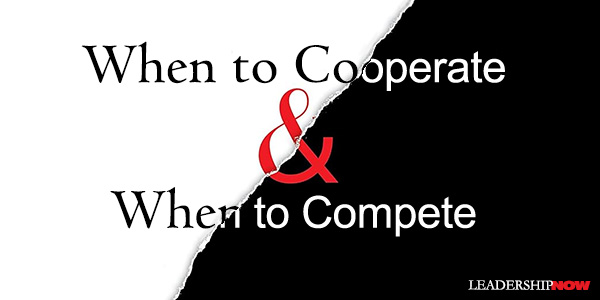
AS WE navigate through life, we must be able to cooperate and compete. Knowing what to do when is very important to getting where you want to go and to where you want to go next time. In Friend and Foe, authors Adam Galinsky and Maurice Schweitzer state that all of our relationships are both cooperative and competitive and we get more out of life when we learn to find the right balance between acting as a friend and acting as a foe. Drawing on interdisciplinary studies, they show how to manage social comparisons (We crave comparisons because we like to know how we’re doing compared to the people around us.), get and keep power, how to get others to put their trust in you and what to do when you lose it, the art of seeking another perspective, negotiating, when it’s best to go last and when it’s best to go first, and finishing every interaction well. When it comes to power, it’s not so much how powerful we are, but how powerful we feel that determines how we think and act. Whether you have it or feel it, power makes us more focused on our own vantage point and oblivious to the perspective of others. The key to keeping our power is being able to see the world through the perspectives of others. There is an acceptable range of power that you can display relative to your actual power. Exceed it, and you will be ostracized. You also need to find the right balance between being confident and deferential. It’s usually a lack of deference rather than an excess of confidence that gets powerful people into trouble. Interestingly, they say we crave hierarchy because it helps to manage the tension between cooperation and in competition. Hierarchy provides a means for solving the question of how we distribute scarce resources. It also facilitates coordination. Studies demonstrate that co-leadership usually doesn’t work. “Co-leadership can kill both ideas and people, because it creates uncertainty over who is really in charge. Of course, co-led teams are not always ineffective and dangerous. But when there is not clear division of labor among these leaders, coordination becomes difficult, patterns of deference can disappear, and conflict can erupt.” Hierarchy is less useful the more human the task or the more cognitively complex—more thought than any one person can attend to. Why? “Because to make the best complex decisions, we need to tap ideas from all the rungs of the hierarchical ladder and learn from everyone who has relevant knowledge to share.” Steve Jobs said, “You have to run by ideas, not hierarchy.” But here is an interesting find. When over 30,000 Himalayan mountain climbers were analyzed, they found that members of expeditions from more hierarchical countries were more likely to die on the expedition because in countries and cultures that are hierarchical, decision-making tends to be a top-down process. These expedition members are less likely to speak up and less likely to alert leaders to changing conditions and impending problems. They say that asking for advice does more than turn adversaries into advocates. “It can also help you supercharge your advocates and lead them to help you climb up the corporate ladder.” And when you don’t take their advice, you need to explain that even though you didn’t take their advice, it gave you a unique perspective and insight that led to your success. Always follow up with your advice-givers. Friend and Foe is a very interesting read and full of useful advice and insights to help you get along and get ahead. It will go a long way to developing the awareness that is essential to leadership. No matter what happens, if your interaction ends well, people will tend to remember it well. More importantly, it sets the stage for anything that comes next. 
Posted by Michael McKinney at 07:42 AM
10.21.15

Collaboration Begins with You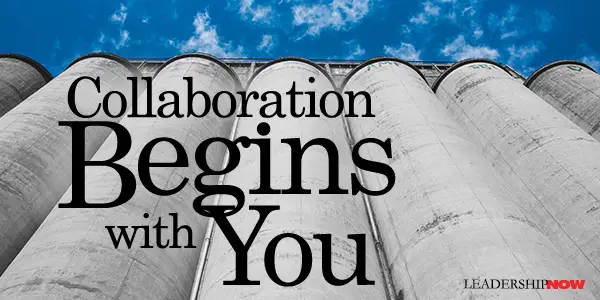
IN Collaboration Begins with You, Ken Blanchard, Jane Ripley and Eunice Carew weave the tale of Dave Oakton, the head of a cross-departmental project that fails due to self-serving silos. What’s more, the company offers “no incentives that encourage people to work together toward organizational goals. Managers get promotions and bonuses based on their own individual success and the success of their siloed groups—regardless of the success of the projects they work on or the company as a while.” Oakton, with the help of his sister-in-law Beattie, turns the tide and the culture changes. Along the way he learns that giving up his own ego first is a prerequisite to others giving up theirs. Beattie shows him a model for a collaborative culture: Heart, Head, and Hands. She explains that heart comes first because collaboration is an inside-out mindset. If your heart isn’t right, you’ll never be a place where you can make collaboration with others work. You have to get you right first. “When your heart is right, you want to bring out the best in others.” The UNITE acronym helps to remember the components necessary for the implementation of the Heart, Head, and Hands model.
To team members, they advise that they are the one’s responsible for ensuring their opinion is heard. “If collaboration begins with me, it’s up to me to make my intention clear that I want to contribute more.” Organizationally, if collaboration begins with each individual, “the only people who should be promoted to leadership positions are those who allow others to contribute.” Empowerment too begins with the individual. “In a culture of collaboration, individual contributors see themselves as self leaders. Leaders empower these individuals by building trust and coaching competence in their job roles and networking skills. And individuals also empower and inspire each other when they share ideas and deliver on their allotted tasks or goals. A collaborative leader is a coach supporting people in their work and removing roadblocks. Collaboration Begins with You also contains a self-assessment to help you find out just how collaborative you are. 
 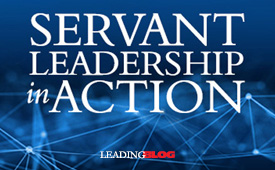
Posted by Michael McKinney at 12:54 PM
10.19.15

20 Habits to Build Your Leadership On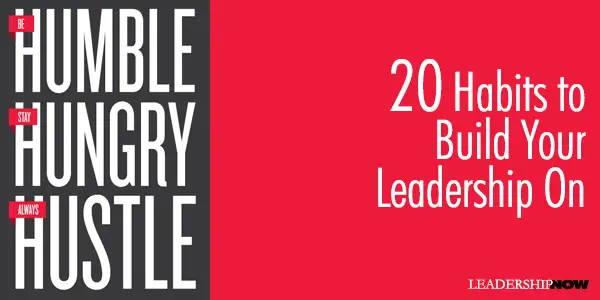
H3 Leadership by Brad Lomenick is the result of experience and a lot of reflection. And we would be foolish not to benefit from it. When he reflected on the habits that propelled him forward he came up with twenty and organized them around 3 important questions every influencer must ask: HUMBLE: Who am I? HUNGRY: Where do I want to go? HUSTLE: How will I get there? The answers to these questions help you to become a change agent. And the habits associated with each of these questions create the playbook for your leadership journey. Lomenick says that your leadership success if built upon habitual work. “It is worked out every day in the tasks we complete, the ways we approach our work, and the rhythms we nurture in our lives. It hangs on the hooks of the patterns we create, not just the success we may stumble upon.” Most of the actions we take during the day are habits. So we must be intentional about what habits we develop and why. In brief, here are the twenty habits with Lomenick’s comments: HUMBLE Self-Discovery: Know who you are “Developing a habit of self-discovery means creating intentional rhythms whereby one observes who he is, listens to his life, and strives to define himself apart from his professional assignments. This habit helps a leader connect to an organization without being consumed by it.” Openness: Share the real you with others “People would rather follow a leader who is always real versus a leader who is always right.” Meekness: Remember it’s not about you “Meekness is not weakness. It’s power under control. It’s ambition grounded with humility and lived out in confidence, not arrogance.” Conviction: Stick to your principles “Your private life determines your public legacy.” And consider this: “Most leaders assume they know what their most closely held convictions are, a false assumption that keeps them from ever naming them.” Faith: Prioritize your day so God is first “A habit of faith is that one thing you can’t afford to not have on the journey. It reminds you that there is a bigger story of which yours is only a part.” Assignment: Live out your calling “There is a marked difference between a calling and an assignment, and failing to recognize it is a one-way ticket to the frustration station. HUNGRY Ambition: Develop an appetite for what’s next “Never satisfied, but always content is the posture of a properly ambitious leader. Curiosity: Keep learning “If you’re not learning, you’re not leading to your full potential.” He recommends: “Find people who are so different they make you uncomfortable, and then spend more time with them than you’d prefer to.” Passion: Love what you do “If you do not nurture enthusiasm, it will naturally diminish over time. Leaders can’t inspire others unless and until they are inspired themselves. Your team feeds off your energy, for better or worse. Leaders are organizational health risks or assets.” Innovation: Stay current, creative, and engaged “The first step to developing this habit is realizing that innovation in part has nothing to do with you; rather, it is determined by those you have around you.” Inspiration: Nurture a vision for a better tomorrow “A habit of inspiration is nurtured in the casting, not just the crafting of vision.” Bravery: Take calculated risks “Life begins at the end of your comfort zone.” HUSTLE Excellence: Set standards that scare you “The goal is to set a standard that scares you to death and then continue trying to raise that standard. Excellence is ultimately about effort. Excellence requires always being one step ahead.” Stick-with-it-ness: Take the long view “My friend Robert Madu says it this way: In a culture where quitting is normal, be crazy enough to stay committed, foolish enough to be faithful, and stupid enough to stick with it!” Execution: Commit to completion “Some of us need to put down the megaphone and just grab a shovel. Little less talk, and a lot more action.” Team Building: Create an environment that attacks and retains the best and brightest “If you combine a positive work environment with regular delightful experiences, you’ll take a giant step toward raising up a dream team.” Partnership: Collaborate with colleagues and competitors “A habit of partnership means that as a leader you are willing to come to the end of your organizational self and see a bigger vision and picture beyond just what you’re working on. Be willing to sacrifice for someone else’s benefit. True collaboration involves giving as much as getting.” Margin: Nurture healthier rhythms “The goal of my reordering was not just to create a better schedule, but to create margin. The more margin in your life, the more room you have to let your rhythms run. Margin is a powerful habit. It creates opportunities.” Generosity: Leave the world a better place “Whatever you possess—the classic formulation is ‘time, treasure, talent’—should be given away liberally and not hoarded. This is what a habit of generosity looks like, and it is one of the best ways to ensure you’ll leave the world a better place than you found it. For me it always begins and ends around the issue of stewardship, which describes the act of watching over someone else’s things. It helps remind me that I am not he owner, but only the manager of all I have.” Succession: Find power in passing the baton “Too many leaders grab their jobs with an unrelenting death grip. But part of every influencer’s responsibility is to boldly build something magnificent and then humbly hand it off to others. The best way to shore up your legacy is to effectively hand it off to your successors.” Great material to go back to again and again.  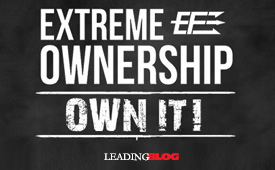 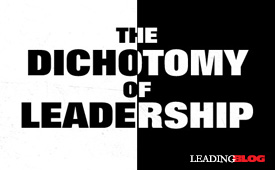
Posted by Michael McKinney at 09:03 AM
10.12.15

Extreme Ownership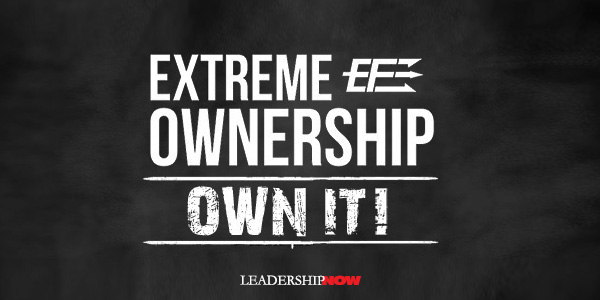 Extreme Ownership by Navy SEAL officers Jocko Willink and Leif Babin is about leadership as personal responsibility. “Leaders must own everything in their world. There is no one else to blame.”
Extreme Ownership by Navy SEAL officers Jocko Willink and Leif Babin is about leadership as personal responsibility. “Leaders must own everything in their world. There is no one else to blame.”
Willink and Babin bring up some of the critical problems that result from not taking responsibility. Too often we as leaders intend to do the right things, want the organization to do the right things, but do not take the steps necessary to make sure that learning happens and standards of conduct are enforced. When thing do not go as expected a leader must stop and do a “stern self-assessment of how you lead and what you can do better” if you want outcome to be different next time. Too often we skip this step, especially when the incident blows by with little or no consequence. When it comes to what we want from our leaders throughout the organization, “it’s not what you preach, it’s what you tolerate. When setting expectations, no matter what has been said or written, if substandard performance is accepted and no one is held accountable—if there are no consequences—the poor performance becomes the new standard.” This is why we see little change in leadership and organizational culture. “Leadership isn’t one person leading a team. It’s a group of leaders working together, up and down the chain of command, to lead.” It’s critical that everyone is on the same page. Everyone must believe in the mission. If you don’t understand the mission, it is your responsibility to ask questions until you understand how and why the decisions being made are made. Ego is always in the background ready to disrupt anything. “Most of the disruptive issues that arise within any team can be attributed directly to a problem with ego.” What is interesting is when we don’t want to take any responsibility—when preserving our rightness is most important to us—we block others from seeing their responsibility. Instead of a learning experience we create a clash of egos. They write, “If you approached it as he did something wrong, and he needs to fix something, and he is at fault, it becomes a clash of egos and you two will be at odds. That’s human nature. But, if you put your own ego in check, meaning you take the blame, that will allow him to actually see the problem without his vision clouded by ego.” By asserting our rightness we block others from being able to see their responsibility. Willink and Babin provide combat examples and apply them to business situations. “Combat is reflective of life, only amplified and intensified.” They cover four critical concepts that enable a team to perform at the highest level: Cover and Move (to move as one), Simple (keep plans and communications simple), Prioritize and Execute (avoid target fixation on a single issue), and Decentralized Command (leaders at all levels must be empowered to make decisions). Finally they cover Sustaining Victory. Here are some thoughts from that section: One of the most important jobs of any leader is to support your own boss—you immediate leadership. Leaders in any chain of command will not always agree. But at the end of the day, one the debate on a particular course of action is over and the boss has made a decision—even if that decision is one you argued against—you must execute the plan as if it were your own. And this key point: A leader must lead but also be ready to follow. Extreme Ownership is inspiring in many ways but more importantly, it tackles accountability for one’s own actions that is not stressed enough in leadership. We all know but we don’t always do. And when we don’t we need to look at our own contribution. 
Posted by Michael McKinney at 11:19 PM
10.01.15

First Look: Leadership Books for October 2015Here's a look at some of the best leadership books to be released in October.




For bulk orders call 1-800-423-8273  Build your leadership library with these specials on over 100 titles. All titles are at least 40% off the list price and are available only in limited quantities. “The reading of all good books is like conversation with the finest men of the past centuries.” — Descartes
Posted by Michael McKinney at 09:09 AM
|
BUILD YOUR KNOWLEDGE


How to Do Your Start-Up Right STRAIGHT TALK FOR START-UPS 
Grow Your Leadership Skills NEW AND UPCOMING LEADERSHIP BOOKS 
Leadership Minute BITE-SIZE CONCEPTS YOU CAN CHEW ON 
Classic Leadership Books BOOKS TO READ BEFORE YOU LEAD |
|